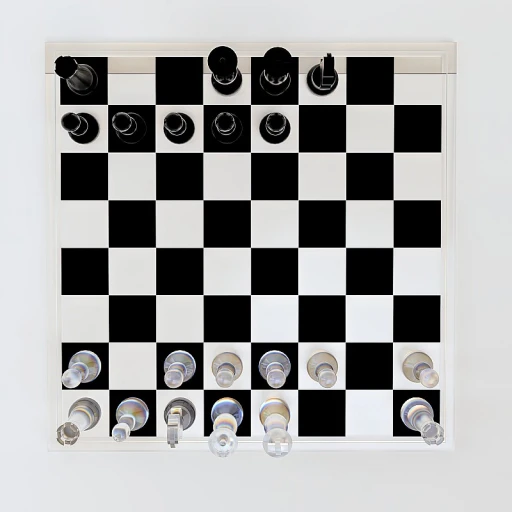
The Role of Agile Ceremonies in Modern HR
The Integration of Agile Ceremonies in HR
The business landscape is constantly evolving, and organizations are seeking innovative strategies to keep pace. In this dynamic environment, Agile has emerged as a critical methodology, reshaping how companies manage projects, develop products, and engage with teams. However, its principles stretch beyond traditional tech and product environments, reaching into areas like Human Resources (HR). Agile ceremonies play a substantial role in modern HR, facilitating more effective management and development practices.
At its core, Agile is about flexibility and responsiveness. This approach can be beneficial for HR teams as they navigate the complexities of workforce management, from recruitment to employee development. Agile ceremonies such as scrums, sprints, and retrospectives offer structured, yet flexible methods for addressing HR challenges. By adopting these frameworks, HR professionals can enhance communication, improve team dynamics, and increase the overall effectiveness of their initiatives.
Agile ceremonies, often utilized in project management, include activities like sprint planning, daily scrum meetings, and backlog refinement. These are designed to bring team members together, ensuring that everyone is aligned with the organization's goals and priorities. For HR, this means creating a space where continuous feedback and improvement are emphasized, fostering an environment that values user stories and understanding within a team.
Incorporating Agile into HR practices can lead to a more responsive and adaptive department. This approach allows HR teams to swiftly address emerging needs and changes within the organization, leading to more efficient processes. The Agile philosophy of regular meetings such as the daily scrum ensures that team members remain focused and informed, reducing the likelihood of bottlenecks.
To understand more about the profound impact Agile methodologies can have on HR, exploring the role of sales forecasting models in CHRO strategy can provide additional insights as these models often rely on similar strategic approaches. You can read more about this topic in the article on the role of sales forecasting models.
Key Agile Ceremonies and Their Impact on HR
Exploring Key Practices for Agile Transformation
Agile ceremonies play a pivotal role in streamlining human resources, and their impact can be significant when implemented effectively. These structured events facilitate collaboration and encourage a continuous improvement mindset within hr teams, thereby enhancing overall project management.
Sprint Planning: This ceremony is fundamental for setting the stage for the sprint. It involves the entire scrum team, including the scrum master, product owner, and development team. The primary aim is to define the sprint goal and agree on the set of user stories to be tackled, sourced from the product backlog. Through a well-structured planning meeting, teams can prioritize work, ensuring clarity and alignment on the project direction.
Daily Scrum: Also known as the daily stand, this brief meeting is an opportunity for team members to synchronize, voice potential obstacles, and adjust plans. It promotes direct communication and helps in keeping the development team aligned on short-term objectives to hasten task completion.
Sprint Review: At the end of each sprint, the sprint review provides a platform to showcase completed work to stakeholders. This informal meeting allows for feedback, encourages transparency, and ensures that the product is evolving in accordance with stakeholder expectations.
Sprint Retrospective: Often considered the heart of an agile team, the sprint retrospective is a time for introspection where teams reflect on the past sprint. The focus is on what went well, what didn't, and how processes can be improved. This ceremony supports a culture of continuous improvement and adaptability, crucial for addressing challenges swiftly.
Backlog Refinement: Engaging in regular backlog refinement helps keep the product backlog updated and prioritized. This ensures the scrum team is well-prepared for upcoming sprints and that the most valuable work is being tackled first. Collaborating on this aspect ensures that there is always a clear focus and a strategic approach towards the end goal.
To gain a deeper understanding of how these practices can be integrated with your chro strategies, you can explore more about expanding strategic capabilities within your organization.
Enhancing Communication Through Agile Practices
Facilitating Better Interaction in the Workplace
Agile ceremonies play a pivotal role in strengthening communication within HR teams. These structured events, derived from agile methodologies like scrum, introduce a rhythm that fosters regular dialogue and collaboration. They provide teams with opportunities to align on project goals, share updates, and address challenges. The daily stand or daily scrum, for instance, is a short meeting that enables team members to stay informed about each other's progress. Participants discuss what was accomplished yesterday, what will be done today, and highlight any obstacles. This time-efficient ceremony builds a culture of transparency, ensuring everyone is on the same page. Sprint planning is another crucial aspect where the scrum team collaboratively defines what can be delivered in the next sprint. The product owner and development team work together to prioritize the product backlog. This process not only clarifies expectations but also empowers team members by giving them a say in the planning process. Effective communication practices within the agile framework encourage ongoing feedback loops, such as in sprint reviews and retrospectives. During a sprint review, the team showcases the product increment to stakeholders, gathering valuable insights and maintaining alignment with business objectives. Meanwhile, the sprint retrospective serves as an opportunity for continuous improvement, inviting team members to reflect on the past sprint and discuss any adjustments for future iterations. This iterative approach, inherent in agile ceremonies, cultivates an environment where communication becomes a catalyst for growth and innovation, essential traits for a successful HR strategy.Improving Team Dynamics with Agile Ceremonies
Fostering Team Cohesion Through Agile Ceremonies
Agile ceremonies play a pivotal role in enhancing team dynamics within HR departments. These structured meetings, such as sprint planning, daily scrum, and sprint review, provide a framework for teams to collaborate effectively and align their efforts towards common goals. By incorporating these ceremonies into HR practices, teams can improve communication, increase transparency, and foster a culture of continuous improvement.
One of the key benefits of agile ceremonies is their ability to bring team members together regularly. The daily scrum, for instance, is a short meeting where team members discuss their progress, challenges, and plans for the day. This daily interaction helps build trust and accountability among team members, ensuring everyone is on the same page and working towards the sprint goal.
Moreover, the sprint retrospective offers an opportunity for the team to reflect on their performance and identify areas for improvement. By encouraging open and honest feedback, retrospectives help teams address any issues that may hinder their productivity and morale. This continuous feedback loop is essential for fostering a positive team environment and driving project success.
Incorporating agile ceremonies into HR practices also empowers teams to manage their workloads more effectively. Through backlog refinement and sprint planning meetings, teams can prioritize tasks, allocate resources, and set realistic timelines. This proactive approach to project management ensures that teams are not overwhelmed and can deliver high-quality work consistently.
Ultimately, agile ceremonies are not just about following a set of rituals; they are about creating a collaborative and supportive environment where team members can thrive. By embracing these practices, HR teams can enhance their dynamics, improve communication, and achieve their strategic objectives more efficiently.
Adapting Agile Ceremonies for HR Challenges
Adapting to Unique HR Situations with Agile
Within the diverse landscape of HR, adapting agile ceremonies to specific challenges can significantly enhance efficiency and efficacy. Agile methodologies offer flexibility, allowing HR teams to customize approaches to suit unique organizational needs. Here are several ways agile ceremonies can be tailored to meet HR challenges:
- Aligning with Strategic Objectives: Agile ceremonies such as sprint planning and backlog refinement provide a platform for HR to align their projects with broader organizational goals. By prioritizing tasks that advance strategic initiatives, HR teams ensure their efforts contribute to overall success.
- Emphasizing Continuous Feedback: Tools like sprint reviews and daily scrums foster environments where continuous feedback is not only encouraged but required. HR can leverage these ceremonies to gather insights and improve processes by assessing outcomes and incorporating stakeholder input.
- Addressing Development Needs: With a focus on skill development, scrum ceremonies can be adapted to address the particular needs of HR professionals. The sprint retrospective, for instance, provides a dedicated time for teams to evaluate their performance and identify areas for skill enhancement.
- Flexibility in Planning: The dynamic nature of HR challenges often requires agile teams to pivot quickly. Scrum masters and product owners, through planning meetings, can deftly rearrange tasks and priorities within the product backlog to better respond to changing circumstances.
Implementing agile in HR settings requires an understanding that not all ceremonies will fit perfectly in every situation. The key lies in remaining flexible, maintaining open communication, and focusing on continuous improvement. By doing so, HR teams can not only tackle current challenges but also proactively prepare for future obstacles.
Measuring the Success of Agile Ceremonies in HR
Evaluating Agile Implementation in HR
Understanding whether agile ceremonies are effectively serving their purpose in HR is crucial for maintaining optimized operations. To accurately assess their impact, consider the following angles:- Alignment with Goals: Verify if the implemented agile ceremonies align with the overarching goals of the HR department. Whether it's improving employee retention, accelerating recruitment processes, or enhancing team collaboration, the activities should be directly contributing to these objectives.
- Regular Review Sessions: Sprint reviews and retrospectives are essential to gauge what's working and what's not. These meetings allow teams to share insights and experiences regarding the impact of agile practices on their daily work.
- Feedback Mechanisms: Encourage feedback from team members after each ceremony. Their input can provide valuable insights into how these practices facilitate (or hinder) their work and team dynamics.
- Performance Metrics: Establish clear metrics to evaluate the efficiency of agile ceremonies. Metrics might include reduced project delivery times, improved team collaboration scores, and the frequency of achieving sprint goals.













